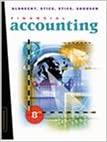ZZZZ BEST was a Los Angelesbased company specializing in carpet cleaning and insurance restoration. Prior to allegations
Question:
ZZZZ BEST was a Los Angeles—based company specializing in carpet cleaning and insurance restoration. Prior to allegations of fraud and its declaration of bankruptcy in 1988, ZZZZ Best was touted as one of the hottest stocks on Wall Street. In 1987, after only six years in business, the company had a market valuation exceeding $211 million, giving its “genius” president a paper fortune of $109 million. Lawsuits, however, alleged that the company was nothing more than a massive fraud scheme that fooled major banks, two CPA firms, an investment banker, and a prestigious law firm. ZZZZ Best was started as a carpet-cleaning business by Barry Minkow, a 15-year-old high school student, in 1981. Although ZZZZ Best had impressive growth as a carpet-cleaning business, the growth was not nearly fast enough for the impatient Minkow. In 1985, ZZZZ Best announced that it was expanding into the insurance restoration business, restoring buildings that had been damaged by fire, floods, and other disasters. During 1985 and 1986, ZZZZ Best reported undertaking several large insurance restoration projects. The company reported high profits from these restoration jobs. A public stock offering in 1986 stated that 86% of ZZZZ Best Corporation’s business was in the insurance restoration area. Based on the company’s high growth and reported income in 1987, a spokesperson for a large brokerage house was quoted in Business Week as saying that “Barry Minkow is a great manager and ZZZZ Best is a great company.” He recommended that his clients buy ZZZZ Best stock. That same year, the Association of Collegiate Entrepreneurs and the Young Entrepreneurs’ Organization placed Minkow on their list of the top 100 young entrepreneurs in America; and the mayor of Los Angeles honored Minkow with a commendation that said that he had “set a fine entrepreneurial example of obtaining the status of a millionaire at the age of 18.” Unfortunately, ZZZZ Best’s insurance business, its impressive growth, and its high reported income were totally fictitious. In fact, the company never once made a legitimate profit. Barry Minkow himself later said that he was a “fraudster” who convincingly deceived almost everyone involved with the company. Through the use of widespread collusion among company officials, Minkow was even able to hide the fraud from ZZZZ Best’s external auditor. For example, when ZZZZ Best reported an $8.2 million contract to restore a building in San Diego, the external auditor demanded to see the building; this was difficult since neither the building nor the job existed. However, officials of ZZZZ Best gained access to a construction site and led the auditor through a tour of an unfinished building in San Diego to show that the “restoration” work was ongoing. The situation became very complicated for ZZZZ Best when the auditor later asked to see the finished job. ZZZZ Best had to spend $1 million to lease the building and hire contractors to finish six of the eight floors in ten days. The auditor was led on another tour and wrote a memo saying, “Job looks very good.” The auditor was subsequently faulted for looking only at what ZZZZ Best officials chose to show, without making independent inquiries. Minkow’s house of cards finally came crashing down as it became apparent to banks, suppliers, investors, and the auditors that the increasing difficulty ZZZZ Best was having with pay- ing its bills was entirely inconsistent with a company reporting so much revenue and profit. In January 1988, a federal grand jury in Los Angeles returned a 57-count indictment, charging 11 individuals—including ZZZZ Best founder and president, Barry Minkow—with engaging in a massive fraud scheme. Minkow was later convicted and sentenced to 25 years in a federal pen- itentiary in Colorado. ZZZZ Best grossly inflated its operating results by reporting bogus revenue and receivables. What factors prevent a company from continuing to report fraudulent results indefinitely? What could the auditor have done to uncover the ZZZZ Best fraud? Source: This description is based on articles in The Wall Street Journal, Forbes, and investigative proceedings of the U.S. House of Representatives, Subcommittee on Energy and Commerce hearings: The Wall Street Jour- nal, July 7, 1987, p. 1; July 9, 1987, p. 1; August 23, 1988, p. 1; U.S. House of Representatives, Subcommittee on Oversight and Investigation of the Committee on Energy and Commerce, January 27, 1988; U.S. House of Representatives, Subcommittee on Oversight and Investigation of the Committee on Energy and Commerce, February 1, 1988; Daniel Akst, “How Barry Minkow Fooled the Auditors,” Forbes, October 2, 1989, p. 126.
Step by Step Answer:

Financial Accounting
ISBN: 9780324066708
8th Edition
Authors: W. Steven Albrecht, James D. Stice, Earl Kay Stice, K. Fred Skousen, Albrecht S.E.




